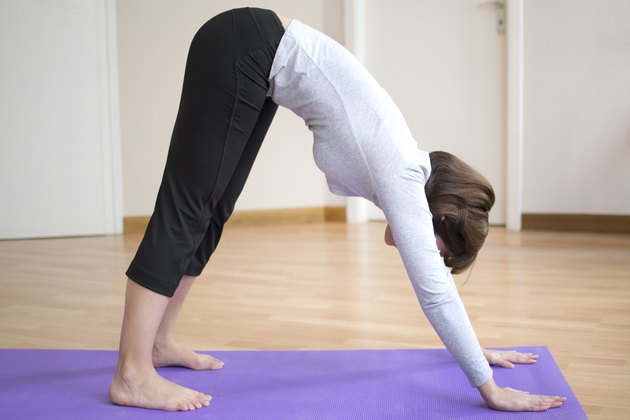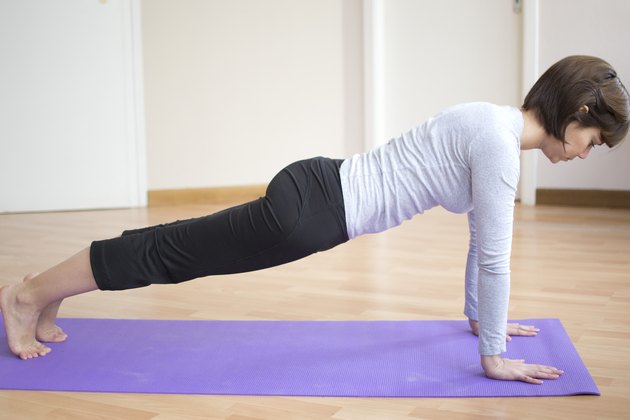Shoulder impingement happens when lifting your arm overhead causes your shoulder blades to rub against the muscles of your rotary cuff. These four muscles — the supraspinatus, infraspinatus, teres minor and subscapularis — control the ability to rotate your arms and lift them overhead.
Shoulder impingement is generally caused by repetitive use of your arms overhead in activities such as swimming, tennis, pitching, painting, carpentry and even yoga.
To increase your range of motion and rebuild your strength, try some modified yoga poses. If you are experiencing severe shoulder pain, check with your health practitioner before doing any exercises.
Alignment:
By increasing your mindfulness of how you use your muscles, yoga alignment principles can help ease shoulder pain.

How to:
- Lift your arms straight out in front of you and turn your palms toward each other.
- Pull your belly in and lengthen the sides of your body.
- Externally rotate your upper arms and notice how your shoulders relax down your back.
- Gently release your arms to your sides. Maintain this alignment for your yoga poses and all other activities.
Related article: A Body Changing Workout To Gain Strength And Body Toning Even If You Have Bad Knees
Half Downward-facing Dog:
To strengthen your rotator cuff muscles, do half downward-facing dog, a modified pose at the wall.

How to:
- Place your palms flat on the wall at shoulder height, and walk your feet back directly under your hips as you bend forward with your head between your arms and your spine parallel to the floor.
- Keeping both hands firmly pressed into the wall, turn your arms inward and bend your elbows slightly.
- Then turn your upper arms outward so the heads of your arm bones engage in your shoulder sockets.
Related article: 9 Stimulating Yoga Poses For That Ultimate Stretch And Span Of The Shoulders
Cat/Cow:
Cat/cow gently helps you acclimate to weight-bearing.

How to:
- On your hands and knees, make sure your hands are directly below your shoulders and tuck your toes under.
- Exhale as you curve your back upward and look back to your legs for cat pose, and inhale as you lift your head and seat and look forward for cow pose.
Related article: How To Workout With Sciatica Using These 8 Relaxing Yoga Poses That Offer Relief
Downward-facing Dog:
Because you extend your arms overhead during downward-facing dog, practice this pose cautiously as your healing progresses.

How to:
- Start with just the arms stretched out while you remain on our knees and gradually work your way into the pose as your shoulder improves.
- From hands and knees, exhale and slowly straighten your knees as you lift your seat upward so you’re in an upside-down “V” shape.
- Keep your elbows slightly bent to maintain external rotation.
Related article: 8 Yoga Poses To Strengthen Your Lower Back & Abs In Only 10 Minutes Per Day
Plank Pose:
To avoid further injury, strengthen your core and upper body muscles with plank pose.

How to:
- From downward-facing dog, inhale as you bring your shoulders forward directly over your hands.
- Keeping your abdominal muscles engaged and your upper arms externally rotated, hold for a few breaths.
- Exhale back to downward-facing dog. Repeat four times.

